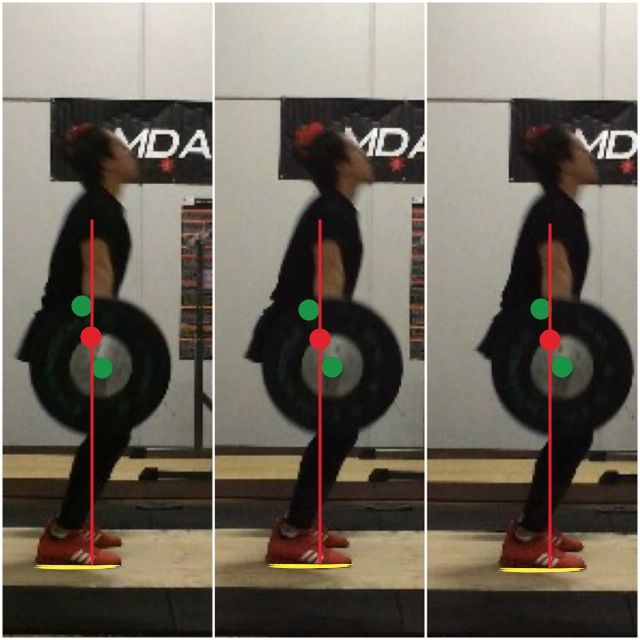3 Important Things About Centre of Mass In Weightlifting.
As more people crave the need to learn and many others begin to use biomechanics terminology, concepts such as centre of mass and base of support begin to be discussed and thrown around when technique is mentioned. In any system, due to gravity, if the centre of mass falls out of the base of support, it disturbs the physical balance of the system. But in weightlifting, there are a few important points to be established when talking about the centre of mass.
1. There is more than just the weightlifter's centre of mass that needs to be observed.
The common observation if centre of mass becomes the topic of discussion in weightlifting technique is looking out for the centre of mass of the lifter being over the feet at all times. This gives us the weight distribution profile (i.e. front of the heel -> heel -> ball of the foot etc) that we are all familiar with. Yes. Observing this allows us to understand if a person is balanced. However, we have an external object or an additional system in weightlifting called the barbell which provides additional mass to the whole system of the barbell and weightlifter.
What this means is that when analyzing the centre of mass, one must also consider the centre of mass of the barbell and how much weight there is in that system along with the centre of mass of the weightlifter. From that, you will be able to work out where the combined centre of mass of the entire weightlifter-barbell system would lie (usually the middle point if both systems hold around the same mass). This will allow you to understand balance of the systems through the lift.
 The centre of mass (or centre of graivty as stated in the image) shifts as we adopt different positions. So understanding how to locate it will help in understanding balance in the lifts.
The centre of mass (or centre of graivty as stated in the image) shifts as we adopt different positions. So understanding how to locate it will help in understanding balance in the lifts.
2. Figuring out the combined COM is not the end of the story.
Now you understand that the combined centre of mass related to achieving balance in the whole weightlifter-barbell system, I'm gonna tell you it's not the only thing you need to worry about. You still need to understand how the individual centres of mass (i.e. of the weightlifter and of the barbell) move individually and in synergy with one another. In other words, you need to be observing these three points moving around each other through the lift.
Of course the combined centre of mass will somewhat be in the middle if you remain balanced in the lift. Now the question will be how far away from the combined COM the other two individual COMs are. Remember the centre point of the two individual systems' COM if both systems are of equal mass is where the combined COM lies. Even if the two individual systems are far apart (whether horizontally or vertically), the combined COM can still be located nicely centered over the base of support (i.e. bar moves aways from you in the second pull but you are still balanced). But to bring both systems back in alignment (i.e. during the turnover), more effort would be required to maintain the balance of the COMs over the base of support (i.e. trying to maintain balance in the receiving position). And that brings me to the next point.
 Green dots are individual COMs of each system. Red dot is the combined. The more they are further away, the more work needed to be done to keep them centered.
Green dots are individual COMs of each system. Red dot is the combined. The more they are further away, the more work needed to be done to keep them centered.
3. Centre of mass also relates to the efficiency of movement.
As mentioned earlier, if the two individual COMs move away from each other too far, more effort is required to bring them back in. This means you are putting more effort to keep everything in balance. To be efficient, effort is well-utiized for the intended purpose. So in the weightlifting movements, our intention is to move as much weight as possible to the overhead position (i.e. either in one movement for the snatch or two movements for the clean and jerk). If you are able to allow the individual COMs to move around the combined COM and reduce the horizontal distance between these three points, you can then direct more effort into moving these three points in a vertical direction. Also, the right muscles can be utilized as you attain the optimal position for your individual physical attributes and the correct movement pattern of the lifts will be developed (i.e. more legs, less arms), subsequently reducing the risk for injury and improving one's performance. In other words, as the movement of the COMs align more vertically and less horizontally, more effort can be utilized in displacing the bar vertically to give you better balance and alignment for a good lift.
P.S. For tips on how to be more efficient, check out my guest post on The WOD Life.
Stay Centered and Keep Lifting,
The Training Geek
